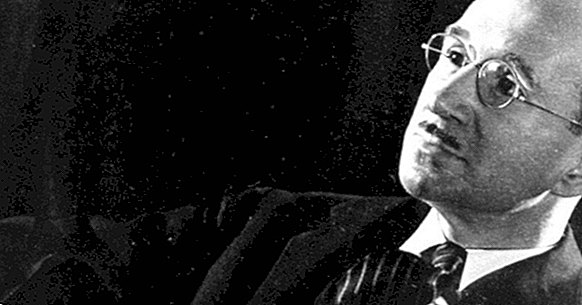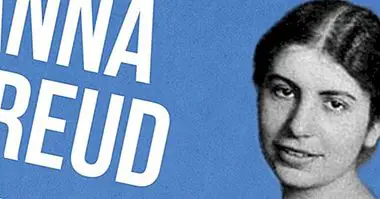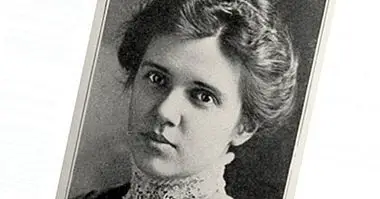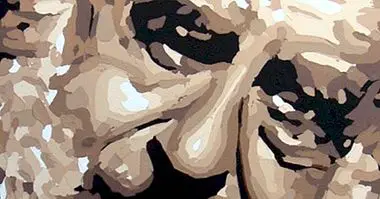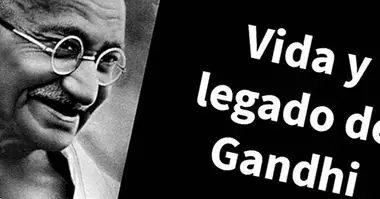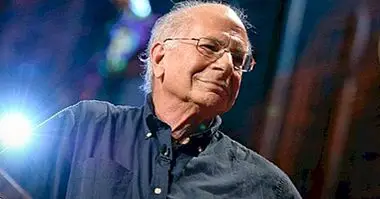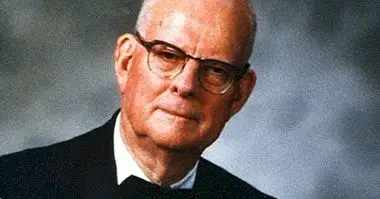Harry Stack Sullivan: biography of this psychoanalyst
The history of the study of psychology, although relatively recent, is full of important figures and different schools and currents of thought. All of them have contributed their vision regarding the psyche and behavior, in some cases opposing each other. Among the different schools of thought we can find the psychoanalytic and psychodynamic current, centered on the existence of intrapsychic conflicts due to the repression of the impulses and the attempt to adjust them to the reality of the medium.
One of the authors of the psychodynamic current, considered within the neofreudianos and that like Alfred Adler and Carl Jung distanced of Sigmund Freud to create his own vision of the psychoanalysis was Harry Stack Sullivan, creator of Interpersonal Psychoanalysis . In this article we will review his life, making a short biography of this important author.
A brief biography of Harry Stack Sullivan
One of the great figures of the psychodynamic currents, Harry Stack Sullivan is known for the creation of interpersonal psychoanalysis, based on the importance of the interaction between people in personal development and in the creation of identity and personality, and its expansion of the psychoanalysis in the population with psychotic disorders and the application of a more empirical methodology in comparison with other psychoanalysts. The development of his theories is greatly influenced by his experience throughout life .
Childhood and early years
Harry Stack Sullivan was born on February 21, 1892 in Norwich, New York. Son of Timothy Sullivan and Ella Stack Sullivan , was born in a family with few resources of Irish origin of Catholic beliefs. His relationship with his parents was apparently convulsed, not having a close relationship with his father and receiving little affection from his mother. However, he would have a better connection with his aunt Margaret, which would lend him great support.
The family had to move due to lack of resources to a farm owned by the maternal family, in Smyrna. His early years were not easy, feeling rejected and socially isolated (it is believed that he did not have a true friendship until eight years of age, with the young Clarence Belliger) living in a population of Protestant majority where Catholics were not welcome, owning a shy nature and excel in studies.
Training and first jobs
In spite of coming from a family of few resources (although the one of maternal origin was something more affluent) it would get to register in the University of Cornwell in 1909 after finishing secondary, but by some circumstance (it is believed that it suffered a psychotic outbreak that he would be detained in an institution) would not finish his studies in it, having only completed his first year.
With the passage of time, Sullivan managed to enter the Chicago School of Medicine in 1911, graduating in Medicine and Surgery in 1917.
The fact that World War I began in 1914 would cause him to be called up, participating in the conflict as a military doctor in the Veterans of the Army medical corps. In 1921 he would start working at Saint Elizabeth's Hospital in Washington, where he would meet the neuropsychiatrist William Alanson White and would work for the first time with schizophrenic people. With him, Sullivan would work to adapt psychoanalysis to the psychotic population, especially in the case of schizophrenia .
A year later he would start working for the first time as a psychiatrist at Sheppard & Enoch Pratt Hospital, where he would stand out for quickly connecting with patients and obtaining good results.
Linking to psychoanalysis and elaboration of Interpersonal Psychoanalysis
During his stay at the Sheppard% Enoch he would meet Clara Thompson, with whom he would share his affinity for the treatment of schizophrenia and become one of his closest friends. This one would introduce him to his mentor Adolf Meyer, of whom Sullivan would learn the psychoanalytic practice as well as the skepticism about the orthodoxy of classical psychoanalysis.
He would also know in 1926 (the same year that his mother died) the anthropologist and ethnolinguist Edward Sapir , whose collaboration would make her interested in the study of communication and its effects. Through him he met George Mead, from whom he would acquire many concepts.
Interested also by Ferenczi's ideas, he proposed to Thompson to go to Budapest to be analyzed by him, in 1927. Upon his return, Thompson would become Sullivan's analyst, which would eventually lead to his being accepted into the American Society of Psychoanalysis.Also in 1927 he would meet a young man named Jimmy whom he would eventually adopt and become his secretary and sole heir.
This whole set of circumstances would mean that during his stay in the hospital (of which he would eventually become Director of Clinical Research), Sullivan was partially based on the theory of Sigmund Freud (with whom he never had contact) and on the contributions of other disciplines to develop a model that could explain the circumstances that can lead to a psychotic crisis. This would entail that he ended up elaborating his interpersonal theory, which in the long run would lead him to found interpersonal psychoanalysis .
Sullivan would be aware of the importance of uniting the contributions of various disciplines, which would lead him to try to found several organizations together with other professionals. However, some of these companies would practically bankrupt you.
Last years and death
From 1930 he would leave his post at the Sheppard hospital (because although he participated very actively in the creation of a new center and his work was not granted and in addition he began to cancel the provision of funds for his research) and He would move to New York.
Three years later he founded the William Alanson White Foundation with other professionals, then created the Washington School of Psychiatry in 1936 and finally published Psychiatry in 1938. He also collaborated with several hospitals and universities, serving as professor and head of the department of psychiatry in Georgetown University. Later on, from 1940 on, he would collaborate with the World Health Organization and Unesco .
Sullivan died on January 14, 1949 in Paris due to a cerebral hemorrhage, while resting in a hotel room where he spent the night during his return trip from a meeting of the World Federation of Mental Health, in Amsterdam.
Although he may not be as well known as other authors of the psychoanalytic current, Sullivan's contributions have had a wide impact in the world of psychology, serving as the basis for such well-known authors as Carl Rogers.
Bibliographic references:
- Barton, F. (1996). Harry Stack Sullivan. Interpersonal theory and psychotherapy. Rouledge London and New York. New York

